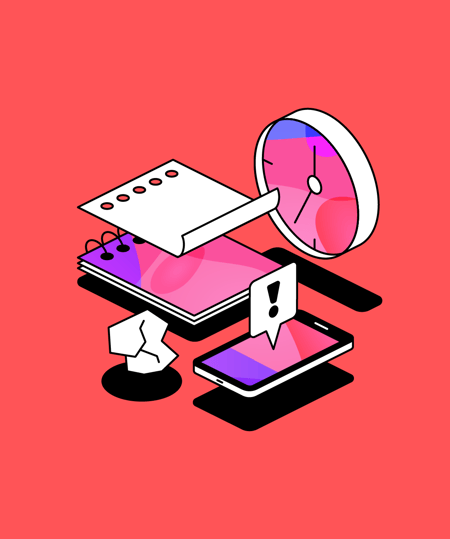How can we bridge the digital divide in education?
Remote learning requires high-speed internet and personal technology, but not everyone has access to these things. So, how can we bridge this digital divide?
 3 min read
3 min read
 Published: 22 Apr 2021
Published: 22 Apr 2021
 Lawrie Jones
Lawrie Jones


The USA’s digital divide has been shockingly exposed by the coronavirus pandemic, with students at risk of falling through the gap.
While the move to online education has empowered and inspired many learners, educational opportunities have been severely limited for those with inadequate internet access.
The pandemic has exposed severe inequalities in access to high-speed internet and personal technology needed for remote learning. Institutions have a responsibility to provide equal access for all students, regardless of background. It’s up to us to bridge the digital divide.
Growing inequality
Access to a computer and a stable and reliable internet connection are fundamental requirements for online learning, but it’s far from universal across the USA. America is the world’s wealthiest country but ranks just 13th for the quality of its infrastructure.
Figures for higher education students struggling to get online are hard to come by, but an estimated 12 million K12 students lack a network connection. In a recent report, How States and Districts Can Close the Digital Divide, the Boston Consulting Group and partners conclude that students in all 50 US states are suffering.
They conclude that the digital divide “contributes to significant and inequitable learning loss”.
In the UK, a poll by the National Union for Students found that one in four higher education students could not access online learning during the early phases of the pandemic. Some of the reasons included lack of IT equipment and software, insufficient course materials, and poor internet connections.
Perhaps inevitably, it’s rural, low-income and students with special needs and disabilities that are most acutely affected.
A 2015 report by the National Center for Educational Statistics (NCES) found that in remote rural areas, the percentages of students who had either no internet access or only dial-up access at home were higher for Black (41 per cent) and Hispanic students (26 per cent) than for White (13 per cent) and Asian students (11 per cent).
The lack of access can translate into a lack of opportunity, cementing existing inequalities. For example, a 2020 report by McKinsey & Co found that the shift to remote school in the spring set white students back a month, but students of color lost between three to five months of progress.
Inclusive environment
The structural challenges and inherent inequalities are beyond the scope for institutions to influence. But progress is being made, much sparked by a new Washington administration. In December 2020, Congress approved additional COVID emergency relief funding, including more than $50 billion in additional financing for K–12 education.
Much of this will help improve access for those from a disadvantaged background, but institutions must do more.
Educators need to recognize the challenges and embrace inclusive approaches to learning that can bridge the divide.
What are the solutions to the digital divide in education?
After studying remote learning approaches used globally, researchers at the UK’s Education Development Trust have identified five key areas of best practice for remote learning.
- Make teaching engagement with vulnerable and disadvantaged students the top priority
- Look for all available opportunities to promote ‘teaching presence’
- Design broadcast and online teaching activities that encourage cognitive engagement and learning
- Understand the challenges and limitations of self-paced and student-directed learning
- Support teachers through the curation of learning resources
Recognizing that some students will have difficulties accessing course materials and making these learners a priority is a crucial first step.
At a practical level, educators should increase their use of technology to free learners from constraints, empowering them to manage their education.
By providing accessible course materials and access to new technologies, institutions can give all students access to the resources they need when they need them.
Digital transformation is coming
Recognizing the need for a fundamental overhaul of higher ed infrastructure and systems, a widespread movement for digital transformation is building.
In fact, 44% of college presidents are using the post-pandemic rebuild as an opportunity to radically alter existing structures in favor of future-proof digital solutions.
What this transformation will look like is currently being worked out. However, it’s clear that most institutions are readying themselves to take on new programs, systems and processes.
Teachers, lecturers and professors should be provided with training, guidance and support to help them harness the potential of these resources.
But departments such as disability services should also take heed and prepare for the future themselves.
That’s why we launched Glean for Education - a brand new program designed to ready your department for the coming digital transformation.
Learn more about the effect this program could have on your students and department by following the link below.
More from Supporting Students
View All
 3 min read
3 min read
AI in education: the importance of transparency
In a world increasingly reliant on AI, learners and educators alike need to trust the software they interact with. Transparency, from all parties, is essential when utilizing AI applications, especially in an education environment.

 3 min read
3 min read
Smarter studies: how to use Glean to support peer discussion and group work
Collaborative learning combines two key goals; working collectively and valuing the insights of others. In this article, we explore how Glean can be used in conjunction with this approach to teaching.

 2 min read
2 min read
From struggling student to AT advocate: how Glean shaped my academic career and journey
Ewan Richards, Assistive Technology Trainer from the University of Wales Trinity Saint David, discusses the struggles he faced as a student and why independence is being championed by him and his disability department on campus.





